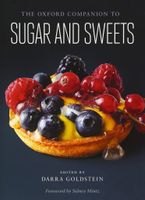Advertisement
Cookie Molds and Stamps
Published 2015
Historically, cookie molds have been made of wood, stone, ceramic (earthenware, stoneware, porcelain), metal, plaster, wax, and even thick pieces of leather. Some are now also made of glass, plastic, silicone, or resin. The mold has a concave design (a negative image, or reverse image) carved or otherwise shaped into it. With some types of molds, a piece of dough is first pressed into the mold, then the excess dough is cut away, and the dough is removed from the mold before being baked on a baking sheet or baking stone. Other types of molds are pressed, face down, onto a rolled-out sheet of dough, then removed from the dough, which is cut or trimmed into shapes before baking. These can be flat molds, known as boards, or rolling pins with designs incised in them. In all cases, a reverse imprint of the mold’s design is embossed on the dough’s surface. Examples of cookies molded in these ways include European springerle, speculaas, gingerbreads, and some shortbreads; Middle Eastern ma’amoul; Malaysian kuih bangkit; and Chinese and Japanese mooncakes.


